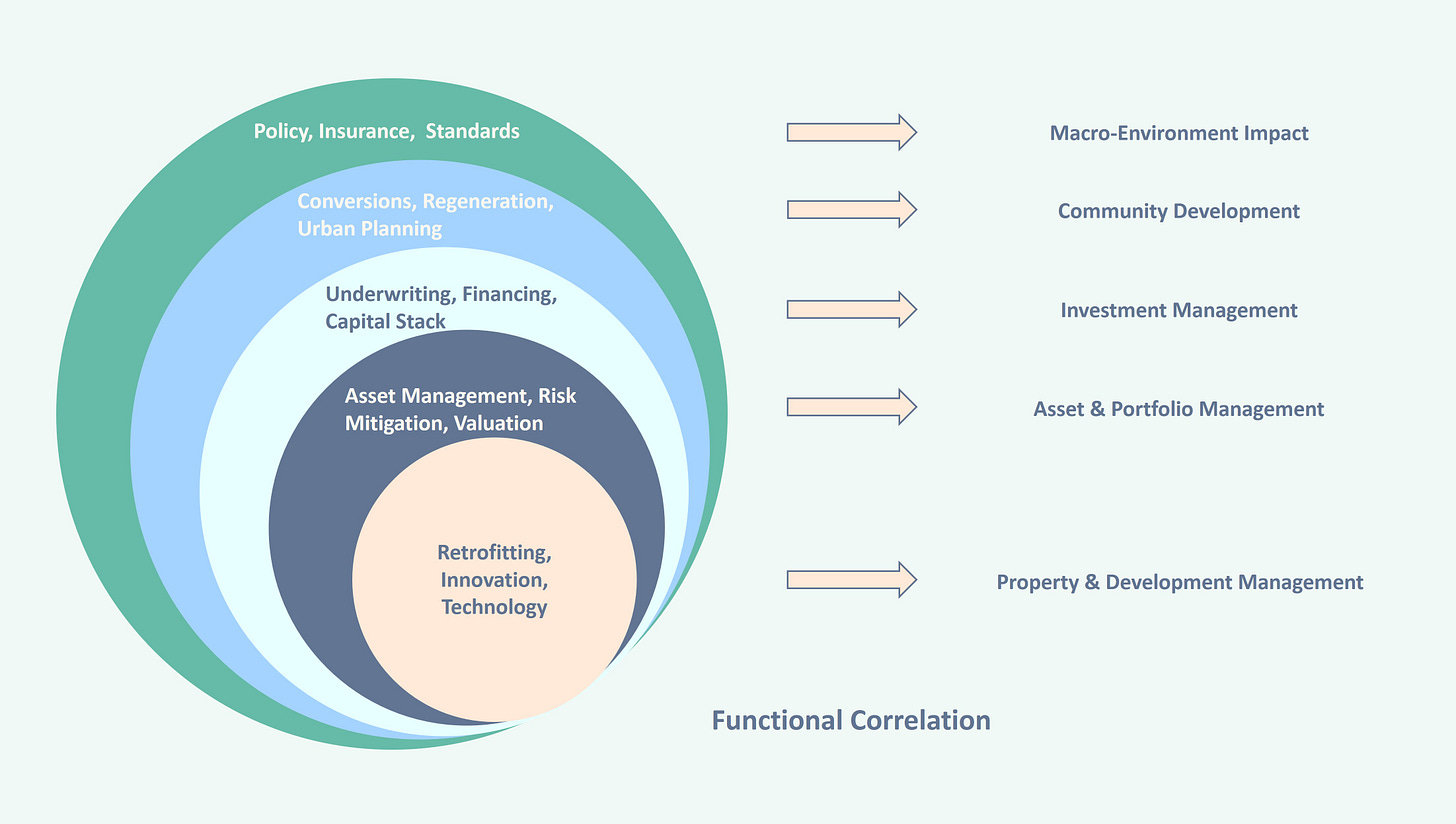Bringing Everything Together
A sustainable built environment is anchored in sustainable functional models
Montréal, Canada
The universe of sustainability in the built environment is exceedingly complex.
We think it is important that subscribers and all those working in the built environment understand how everything fits together and why these categories have been chosen. This will allow each of you to appreciate the mark you can have in our collective effort to decarbonize our assets, as well as "greening" and "humanizing" the built environment. Our industry continues to be responsible for roughly 40% of global carbon dioxide emissions, despite the efforts of numerous stakeholders, so there is an opportunity for each of us to make a significant impact.
The simplest way to make sense of this complex system is by looking at the functional model of the built environment. The diagram above illustrates how all the components fit together. For those unfamiliar, a functional model explains how a system works by focusing on its roles and activities—what it does, rather than how it is built.
Organizations and large-scale projects often rely on such models as blueprints to show how different functions interact. These models trace the journey of inputs through various stages to produce outputs, making it easier to understand the purpose and behavior of each part. In this context, the model highlights where specific best practices influence the decarbonization process and the sustainability strategies.
We made the decision not to cover Certifications and Ratings used in the built environment. (Please note that this is different than Standards, which are covered by the library.) Our initial priority is to focus the library on execution rather than measurement. However, this category of content is of critical importance because the systematic evaluation of performance is essential to all our work. We will evaluate what would be an appropriate content for this category and we will address it in due course.
To conclude, I will point to an article that a business friend wrote in the Spring of 2022 and is part of the library, The Third Generation: Outcomes and Opportunities in Moving to ESG Gen 3 for Real Estate Investors. I found that Catherine and her co-writer, Paige, were able to synthetize very well the evolution of sustainability, ESG and DEI in real estate, which can apply to other real assets, and their recommendations on next steps were right on. Their view was that to unlock meaningful opportunities, ESG must be approached as a dynamic and strategic process rather than a static checklist. Advancing beyond initial ESG efforts requires a shift toward programs that deliver clear, measurable outcomes aligned with long-term business objectives. Having easy access to available best practices as well as a clear understanding on how they come together is another way SAM Curated can bring value to you, your projects and your organizations.
Disclaimer: SAM Curated, the curators and any other guests invited to share their opinions assume no responsibility or liability for any errors or omissions in the content of this site and/or email generated by this site. Please note that the information on this site is provided on an "as is" basis, with no guarantees of completeness, accuracy, usefulness or timeliness.





